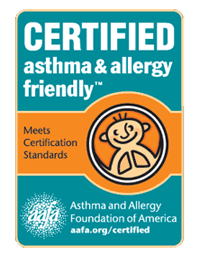As evidence has mounted that the virus that causes COVID-19 can spread through the air, it has placed an urgent spotlight on indoor air ventilation.
In addition to wearing masks and keeping a physical distance from people outside your household, experts recommend improving air flow in indoor spaces. The virus is more likely to spread indoors where air may be trapped from flowing. The virus spreads from tiny droplets that come out of people’s mouths and noses when they breathe, talk, sing, yell, sneeze, cough, or chew. Bigger droplets will fall to the ground or on nearby surfaces, but smaller droplets can float in the air.
Poor indoor air ventilation exposes people to air pollution, viruses, mold, and other irritants that can harm their health.
There are steps you can take to improve your indoor air flow and the quality of the air in your home or other indoor spaces. First, open windows and doors to help exchange indoor air with outdoor air. (This isn’t always practical due to pollen, weather, or safety concerns.) Servicing your heating, ventilation, and air conditioning (HVAC) unit or central furnace system is important. Replace or clean your system’s air filters as recommended by the manufacturer. If your home does not use forced-air heating with air filters, you may need to add an air cleaner to certain rooms to help filter the air. You can also use fans to help improve air flow.
 Air cleaning products like air purifiers, air filters, or whole home air cleaners that earn asthma & allergy friendly® certification are proven to remove asthma and allergy triggers from the air. They include animal dander, pollen, mold spores, and irritants, such as smoke.
Air cleaning products like air purifiers, air filters, or whole home air cleaners that earn asthma & allergy friendly® certification are proven to remove asthma and allergy triggers from the air. They include animal dander, pollen, mold spores, and irritants, such as smoke.
Before selecting a portable air cleaner, consider the size of the room so the air cleaner you choose is powerful enough. An air cleaner’s clean air delivery rate, or CADR rating, measures the capacity of an air cleaner. If you purchase an air cleaner with a CADR rating too low for your room, it will be ineffective. The higher the CADR, the more particles the air cleaner can filter and the larger the area it can serve. For air filters, the minimum efficiency reporting value, or MERV rating is a measure of the size of particles the filter will remove. HEPA filters are normally rated MERV 13.

 Sign up for our FREE asthma and allergy magazine – freshAAIR™! Get our latest issue full of information on ways you can create a healthier home and reduce exposure to asthma and allergy triggers.
Sign up for our FREE asthma and allergy magazine – freshAAIR™! Get our latest issue full of information on ways you can create a healthier home and reduce exposure to asthma and allergy triggers.Read online or have it updates sent to you via email.


Comments (2)